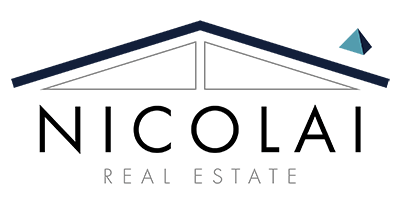RV Parks and Seasonal Demand: Real Estate Cash Flow Strategies
Investing in an RV park offers a unique opportunity for real estate investors to tap into a growing and dynamic market. With the increasing popularity of mobile lifestyles, outdoor recreation, and remote work, RV travel has surged in recent years—and with it, the demand for well-located, well-managed parks. However, one of the most significant challenges in this niche is managing the seasonality of income.
For investors looking to generate consistent cash flow, understanding and planning for seasonal demand is key to maximizing profitability. Here’s how to structure your RV park operations and revenue strategies to account for peak and off-peak periods while maintaining steady income throughout the year.
Understanding Seasonal Trends in RV Travel
RV travel patterns are heavily influenced by weather, school schedules, and regional events. In northern climates, parks tend to see high occupancy from late spring through early fall, while the winter months often bring a slowdown or even closures due to cold weather. Conversely, RV parks in southern states may thrive during the winter months as “snowbirds” migrate from colder regions to seek sunshine and warmth.
In addition to climate-driven fluctuations, demand can also spike around major holidays, regional festivals, and school breaks. Understanding these patterns enables operators to make informed decisions about pricing, staffing, and marketing.
Dynamic Pricing and Reservation Management
One of the most effective ways to manage seasonal demand is to implement dynamic pricing strategies. During peak times—such as summer weekends or holiday weeks—rates should reflect higher demand and limited availability. During slower months, offering discounted rates, bundled packages, or long-term stay incentives can help fill sites that might otherwise sit empty.
Using an online reservation system with built-in dynamic pricing tools makes it easier to adjust rates in real time based on occupancy trends and market data. Encouraging advanced bookings also helps lock in revenue and provides better forecasting for operations.
Diversifying Income Streams
To smooth out cash flow, successful RV park owners often develop additional revenue streams beyond nightly site rentals. Consider adding:
-
Long-term rental options for monthly guests or seasonal workers
-
Cabin or tiny home rentals for non-RV travelers
-
Laundry, propane, or dump station services
-
Wi-Fi and premium site upgrades
-
On-site retail or vending options (snacks, firewood, RV supplies)
-
Event hosting, such as outdoor weddings or family reunions
These add-on services can generate year-round income and increase the per-guest revenue even during off-peak times.
Attracting Long-Term and Off-Season Tenants
Long-term tenants can help provide a stable foundation of income. Snowbirds, construction workers, traveling nurses, and remote workers are all potential long-term residents who value affordable housing with flexible terms.
To attract these guests, offer discounted monthly rates, reliable Wi-Fi, secure facilities, and convenient amenities. Developing strong relationships with local employers or travel nurse agencies can also be a consistent source of extended-stay bookings.
Investing in All-Season Appeal
Another strategy is to enhance your park’s appeal throughout the year. In colder climates, this might include:
-
Adding winterized hookups for year-round operation
-
Creating cozy communal areas with fire pits or heated pavilions
-
Hosting winter events or themed weekends
-
Partnering with nearby ski resorts, hot springs, or holiday markets
In warmer climates, consider installing shade structures, cooling stations, or splash pads to attract summer guests who seek comfort along with adventure.
Strategic Marketing and Guest Loyalty
During slower seasons, a well-executed marketing campaign can keep your park top of mind. Use email newsletters, social media, and travel blogs to promote off-season specials, upcoming events, or new amenities. Encouraging repeat visits through loyalty programs, referral discounts, or early-bird booking offers can build a strong guest base that returns year after year.
Don’t underestimate the power of reviews—positive online testimonials, especially on platforms like Google, Yelp, and RV-specific directories, can drive bookings even during off-peak periods.
Financing and Budgeting for Seasonality
From a financial perspective, it’s crucial to budget with seasonality in mind. Build cash reserves during peak months to cover fixed costs in leaner periods. Analyze historical occupancy and income data to forecast expenses and prioritize maintenance or upgrades in the off-season when the park is less busy.
When financing an RV park, lenders may consider the variability in income, so having a well-documented business plan that accounts for seasonal cash flow fluctuations can help you secure better terms.
Running a profitable RV park takes more than just a good location and basic infrastructure—it requires a deep understanding of seasonal demand and a proactive approach to cash flow management. By implementing smart pricing, diversifying services, and attracting year-round guests, owners can build a resilient, high-performing investment.
Whether you’re new to the RV industry or looking to optimize an existing operation, the key to success lies in adaptability, customer focus, and long-term planning. With the right strategy, your RV park can thrive in every season.
